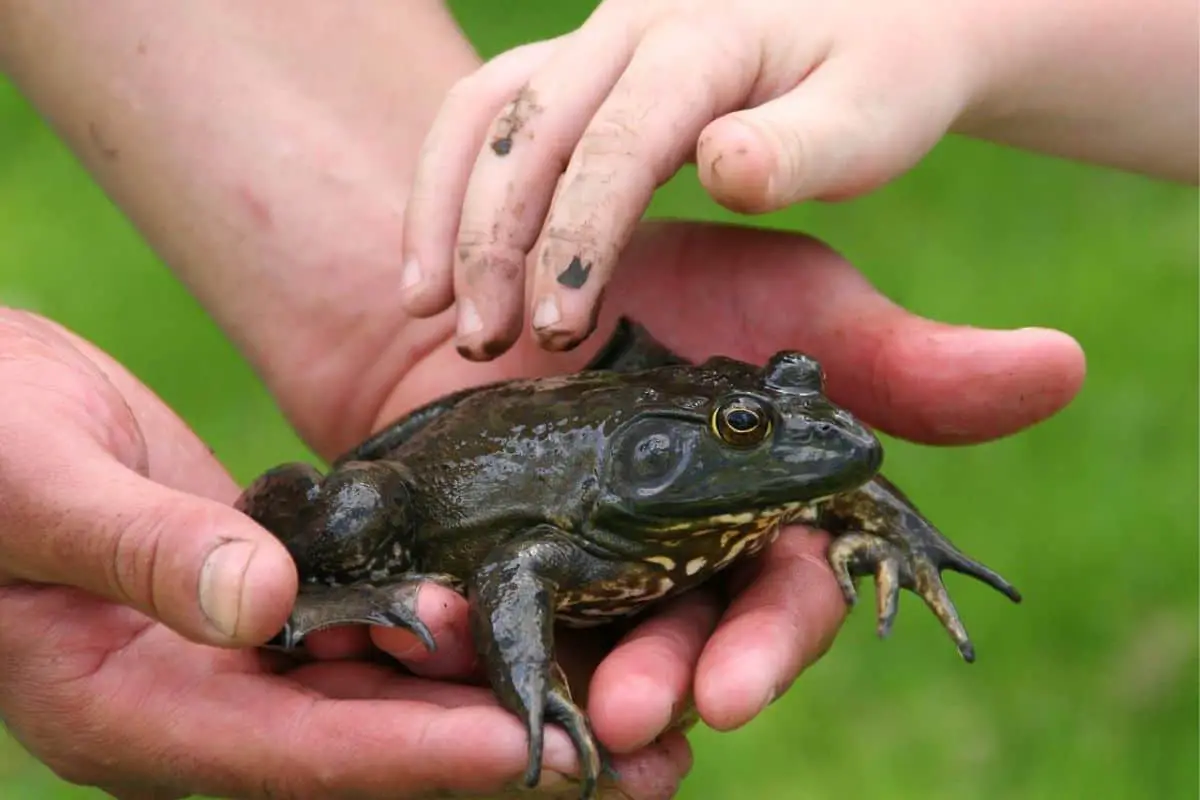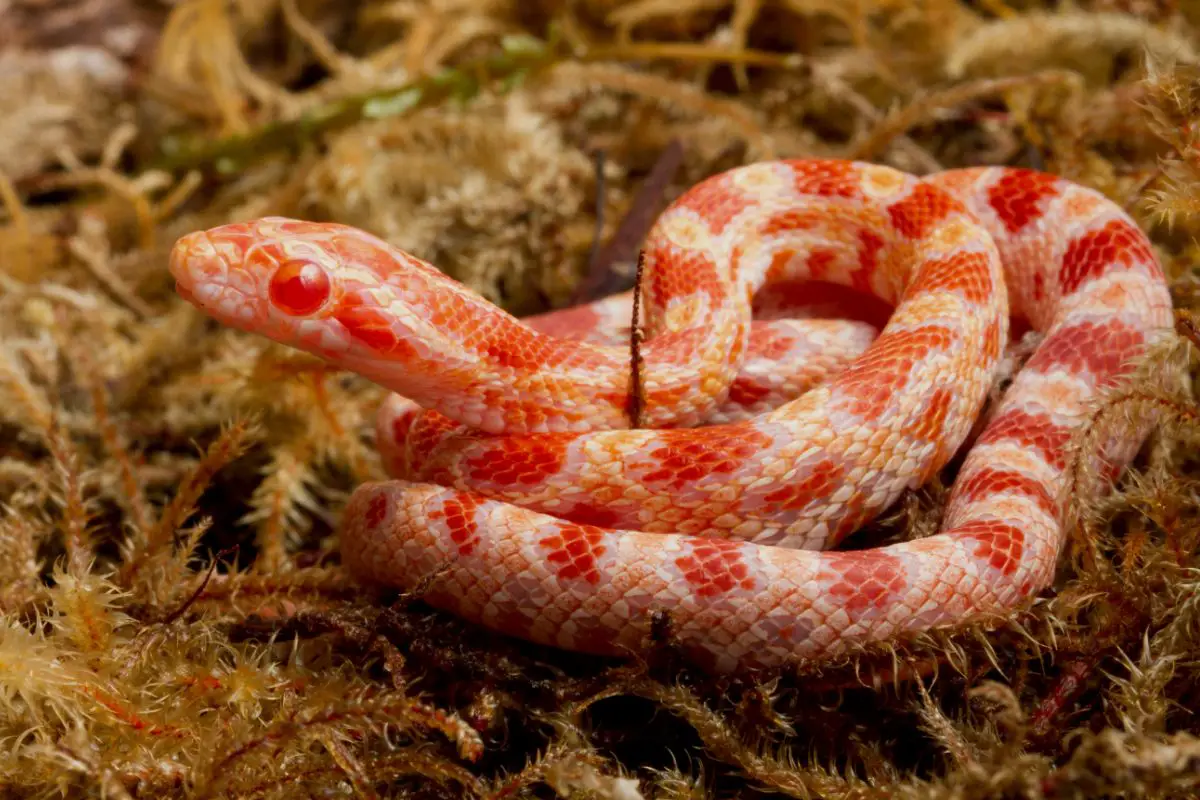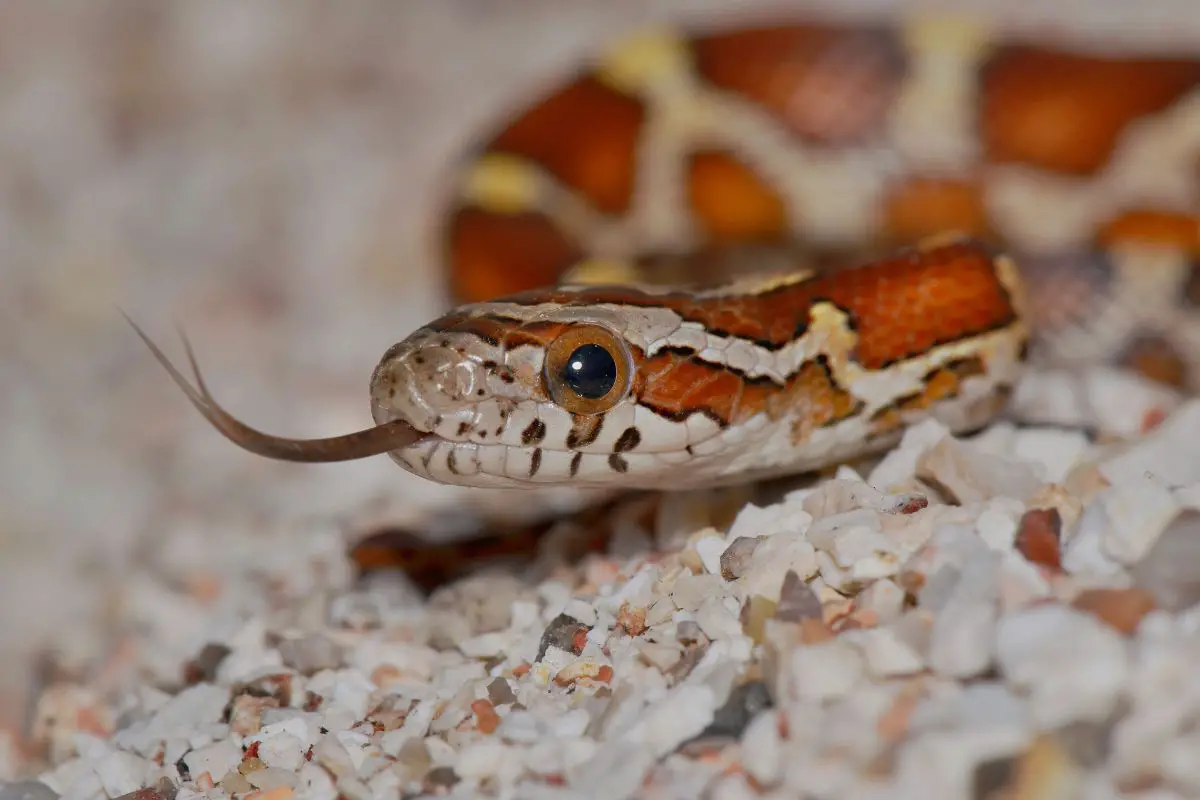Frogs are fascinating, adorable little creatures. This is the reason why a lot of people want to be part of their family! But what if you come across an injured frog in the wild? Can you keep a wild frog as a pet?
Like any other living thing, it’s important to carefully consider all the risks before keeping wild frogs as pets. This includes determining whether it will cost too much to care for them and whether it’s even legal in your area.
Don’t worry! This article will serve as your reference for learning whether it is legal for you to keep a wild frog and what you need to know in order to do so.
Key takeaways:
- Some states in the United States prohibit capturing wild frogs and keeping them as pets.
- Frogs play an important role in the ecosystem, and catching them for personal reasons may harm their habitat.
- Before catching a wild frog, make sure you are knowledgeable about how to handle them because they may carry some diseases.
Can you keep a wild frog as a pet?
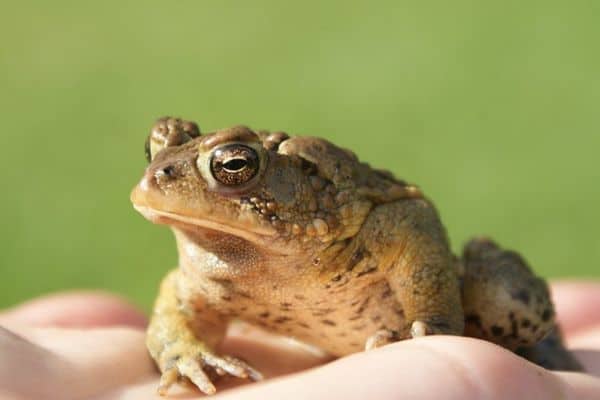
Frogs found in the wild can be legally kept as pets in some states, but for a variety of reasons it’s not a good idea to take a wild animal from it’s natural habitat.
If you insist on keeping a wild frog as a pet, make sure it isn’t endangered or legally protected. You can consult the United States’ list of threatened and endangered species. Check with the U.S. Fish and Wildlife Service to see if your frog is legally protected.
Are wild frogs protected?

The Endangered Species Act protects wild frogs in the United States (ESA). This means that hunting or capturing wild frogs without a permit is illegal, and you cannot keep some species of wild frog as a pet.
This is due to the fact that frogs play an important role in our ecosystem. They help to control insect populations and eat other animals that would otherwise cause problems for humans. Unfortunately, many frog species are at risk due to habitat loss and climate change.
Some states have laws that make it illegal to catch or keep certain types of frogs as pets.
Type of wild frogs you are not allowed to catch or keep in each state.
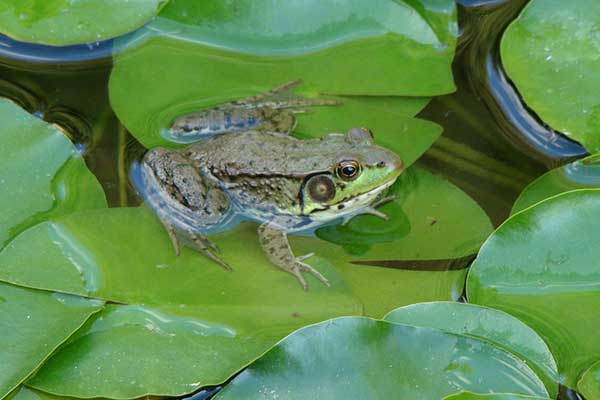
In the United States, there are over 400 different species of frogs and toads. Some are legal to own in every state, while others are illegal in certain states. The species that are considered illegal depend on the state’s laws and regulations.
If you want to keep a wild frog as a pet, the first step is to find out which species are illegal. You may need to do some research on this topic before making your decision.
To help you out, here are the species of wild frogs that are illegal in some states:
Arizona
Here are the frog species that are not allowed to be kept as pets in Arizona:
- Bullfrogs
- Leopard frogs
- Clawed frogs
Kentucky
Tongueless or African-clawed frogs are the only species of frogs that are illegal in this state.
Louisiana
Because Mississippi gopher frogs are listed as threatened or endangered, they are not permitted to be held captive in Louisiana.
Maine
It is illegal to capture and keep these frogs as pets.
- Western dwarf clawed frogs
- African clawed frogs
These frogs, however, can only be kept if you have a government permit.
- Golden poison frogs
- Golfo Dulce poison-dart frogs
Maryland
These frogs are illegal to be kept in this state:
- Carpenter frogs
- Mountain chorus frogs
- Barking treefrogs
Massachusets
In the state of Massachusetts, it is forbidden to take wild Northern Leopard Frogs.
Michigan
These frogs caught in the wild are not permitted:
- Boreal chorus frogs
- Pickerel frogs
- Mink frogs
- Blanchard’s cricket frogs
Minnesota
Unless your frog was registered prior to 03/02/2005, it is prohibited to keep frogs as pets or in captivity.
Montana
These species of frogs are banned as pets:
- African clawed frogs
- North American bullfrogs
Nevada
Clawed frogs are not allowed in this state.
New Hampshire
Before you can keep these frogs as pets in New Hampshire, you must first obtain a permit:
- American toads
- gray treefrogs
- Spring peppers
- American bullfrogs
- Green frogs
- Pickerel frogs
- Mink frogs
- Wood frogs
Oregon
These wild native frogs can be kept as pets in Oregon, but you must have a valid Wildlife Holding Permit to do so:
- Pacific treefrog or Pacific chorus frogs
- Painted frogs
- Cricket frogs
- European tree frogs
- Cope’s gray tree frogs
- Green tree frogs
- Mediterranean tree frogs
- Gray tree frogs
- Chorus frogs
- Australian froglets
- Australian swamp frogs
- Barred frogs
- Spadefoot toads
- Asians clawed frogs
- African bull frogs
- Siberian frogs
- Khabarovsk frogs
- Crawfish frogs
- Swedish swamp frogs
- Asian frog
- Rio Grande leopard frog
- Plains leopard frogs
- Caucasus frogs
- Inkiapo frogs
- Toudaohe frogs
- Green frogs
- Spring frogs
- Dybowski’s frogs
- River frogs
- Stream frogs
- Pig frogs
- Turkish frogs
- Iberian frogs
- Agile frogs
- Italian agile frogs
- Kokorit or Taipa frogs
- Brusa frogs
- Nikko frogs
- Pickeral frogs
- Mink frogs
- Wood frogs
- Tago frogs
- European common frogs
- Tasushia frogs
- Carpenter frogs
Rhode Island
You are not allowed to keep any of the following frogs in this state:
- American bullfrogs
- Gray treefrogs
- Northern green frogs
- Northern leopard frogs
- Pickerel frogs
- Wood frogs
Virginia
A permit is required for these specific frog species.
- African dwarf frogs
- African clawed frogs
Why is it not advisable to keep a wild frog?
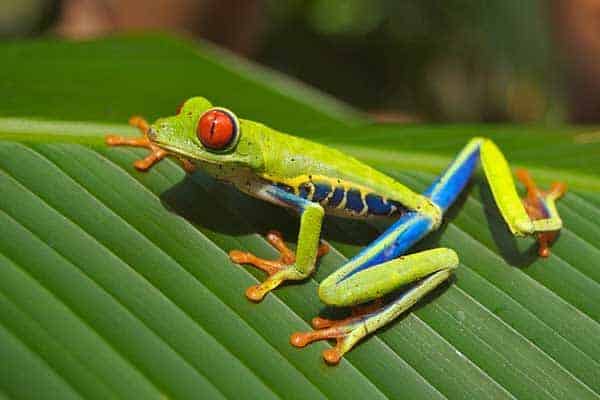
Keeping a wild frog as a pet may appear to be a fun and exciting idea, but it is not. Wild frogs are frequently carriers of diseases that can be transmitted to humans and other animals. If you keep the frog in your home, it may escape and cause damage to your property or come into contact with your other pets.
Even if you do manage to create an environment that mimics the frog’s natural habitat, keeping them healthy will still be expensive—and even then, they may not live very long. Instead of purchasing a wild animal, consider donating money or volunteering with an organization that rehabilitates injured wildlife.
Importance of wild frogs in the ecosystem

Wild frogs play an important role in the ecosystem. These creatures are keystone species, which means they have a disproportionately large impact on their surroundings.
Frogs are among the most important animals in any ecosystem. In their natural environments, frogs play an important role in the maintenance and regulation of many other organisms. They provide food for other animals, help to regulate water quality, and control insect populations.
Insect populations are reduced because of frog predation. Frogs in a body of water will consume many of the insects that would otherwise pollute the water. This helps to keep the water clean and safe for the other animals that live there.
Conclusion
As you can see, there is no simple answer to the question of whether you can keep a wild frog as a pet. You can certainly keep a wild frog as a pet if you are prepared to accept the risks involved. Just make sure that you are confident in your capacity for responsibility and that the frog you are capturing from the wild is not prohibited by local or state law.
